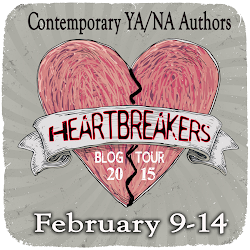Every odd Tuesday (because Tuesdays aren't odd enough), I feature a different young adult fiction author YOU should know - from best-sellers to debuts. And what better way to do this than asking them TWO fun questions. Short, sweet, and sassy - just the way I like interviews.
1. You have nine novels published for young adults. Quite the accomplishment and I know you have more in the works. How has your writing process changed from your first book to your current project? Or is it the same?
I wrote my first book when I was thirteen, after being inspired by reading Guide to Fiction Writing by Phyllis A. Whitney. The book detailed step-by-step how to write a novel: plot it out, write an outline, do a first draft, let it rest, revise, submit to a publisher. For the most part, this is still my pattern.
 Today, I'm featuring a very prolific Alberta author, Nicole Luiken. I've had the pleasure of meeting Nicole at several events and I'm always impressed with her smarts and experience in this industry.
Today, I'm featuring a very prolific Alberta author, Nicole Luiken. I've had the pleasure of meeting Nicole at several events and I'm always impressed with her smarts and experience in this industry.
On to the questions!
1. You have nine novels published for young adults. Quite the accomplishment and I know you have more in the works. How has your writing process changed from your first book to your current project? Or is it the same?
I wrote my first book when I was thirteen, after being inspired by reading Guide to Fiction Writing by Phyllis A. Whitney. The book detailed step-by-step how to write a novel: plot it out, write an outline, do a first draft, let it rest, revise, submit to a publisher. For the most part, this is still my pattern.
What's
changed the most for me is me revision process. Teenage Me did only a quick
clean-up rewrite before submitting the book. (In my defense I wrote my first
three books on a manual typewriter, where even small changes meant retyping the
whole page and using liquid paper to correct typos and messing with carbon
copies). If it was rejected, I would do another draft, just kind of throw
myself at the wall until I got over it or gave up.
Now
that I know so much more about writing and understand how plots should work, I
do four drafts before submitting. In the second draft I make large scale
changes: rejigging the plot, adding whole new characters, chapters and
subplots. (I find this part fun) Then, when I'm a few chapters into the second
draft, I simultaneously begin the third draft, which is the fine editing or
polishing draft: working on a sentence level and keeping an eagle eye out for
my particular weaknesses. By the time I finish the 2nd draft, I'm usually 2/3
through the 3rd draft. Since I hate polishing, this makes the task ahead of me
a lot less daunting. The 4th draft is quick going over, searching for
consistency errors and checking arcs (plot, subplot, character).
I've
also started working on multiple projects. For instance, right now I'm working
on the 4th draft of a paranormal romance, while plotting out a YA werewolf
novel.
2. As a science fiction writer, what's your take on the importance of world building?
What can I say about world-building? World-building is a third task that writers of SF and fantasy take on. In addition to an interesting plot and fascinating characters, SF/Fantasy writers must provide a cool setting.
What can I say about world-building? World-building is a third task that writers of SF and fantasy take on. In addition to an interesting plot and fascinating characters, SF/Fantasy writers must provide a cool setting.
In
near-future SF like my Violet Eyes series, I extrapolated a few current trends.
I
invented a genetic super-species. People fly in aircars, and there are space colonies and beanstalks. I also invented Historical Immersions, which are a cross between historical reenactments and reality shows. I gave my world an environmental crisis in its near past, which resulted in the change of political borders. I made a few social changes: a license is required to have children, and people indebt themselves to the government for post-second education and have to work the debt off.
invented a genetic super-species. People fly in aircars, and there are space colonies and beanstalks. I also invented Historical Immersions, which are a cross between historical reenactments and reality shows. I gave my world an environmental crisis in its near past, which resulted in the change of political borders. I made a few social changes: a license is required to have children, and people indebt themselves to the government for post-second education and have to work the debt off.
Do
I think this is what the world will actually be like 100 years from now? No. I
was merely trying to tell an interesting story. SF in the '50s focused on
expected changes in transportation: jetpacks, space colonies--and totally
missed the communication revolution--personal computers, cellphones, videos.
I'm sure I missed something vital, too. The point isn't to get everything
right; the point is to make people think a little about future consequences of
current trends.
Thanks so much for these insights, Nicole! Get updates on Nicole's projects via her website and follow her on Facebook.
Tuesday 6 January 2015









0 comments: